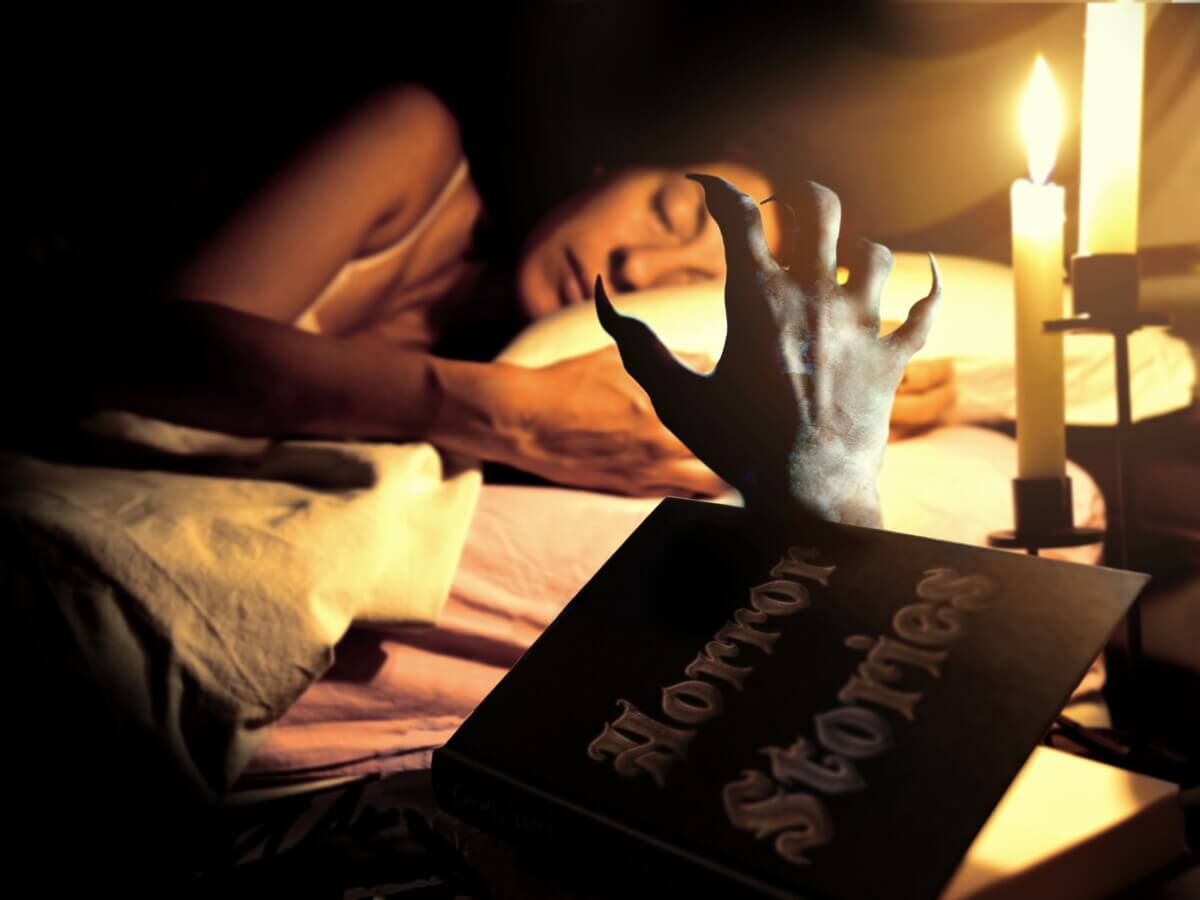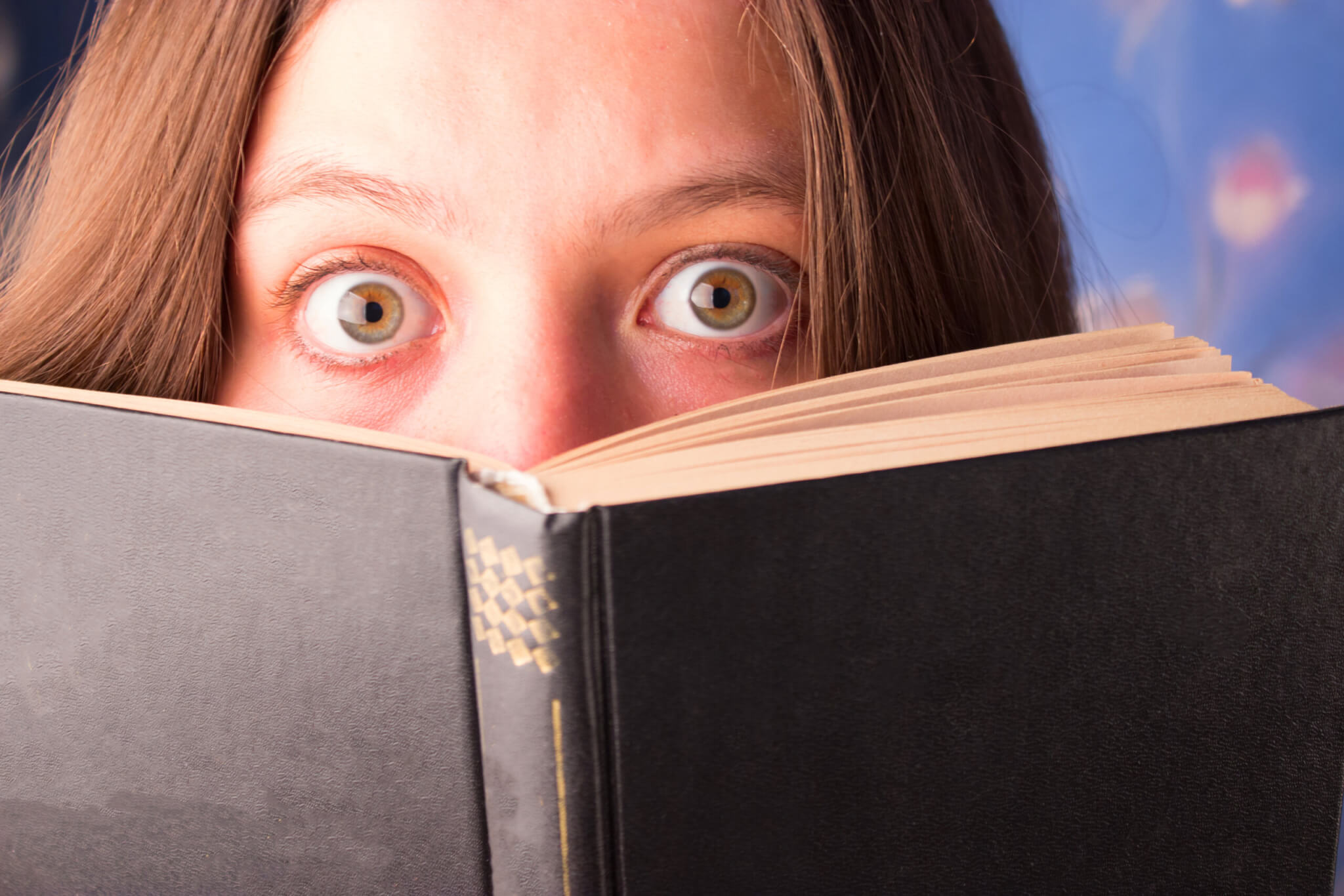
A book of horror stories coming to life (Photo by serpeblu on Shutterstock)
The best paranormal novels transport readers to worlds where the line between reality and the supernatural blurs effortlessly. These stories weave intricate plots, rich character development, and spine-tingling suspense, captivating readers with their ability to blend the ordinary with the extraordinary. With each turn of the page, they immerse readers in a realm where ghosts, magic, and unexplained phenomena reign, leaving a lasting sense of wonder and fascination. For our readers who are seeking a new page-turner, this list of the top five paranormal novels is a great place to start.
A good hair-raising supernatural story can scare the pants off some, but for others, horror hardly increases their pulse. Ever wonder why some people don’t even flinch when they hear a scary ghost story? For some, a recent study finds they may have a case of aphantasia—the inability to visualize imagery. Researchers in Australia say, for people with “mind blindness,” reading a scary story may be no different emotionally than reading an instruction manual. The team at the University of New South Wales Sydney compared the emotional responses of people with aphantasia to the vast majority of people who have the ability to form images in their mind. For the roughly two to five percent of the population with aphantasia, there is little to fear from hearing or reading a spooky story. Researchers say their brains simply do not conjure up an image. Their study found that seeing frightening images is the same for everyone. In other words, seeing is believing.
A new survey finds that despite the many heart-pounding fright flicks that have spooked moviegoers in recent years, you’ll have to turn back the clock for the scariest films ever. The survey of 2,000 American adults, commissioned by video streaming service Vudu, had few surprises. Americans agreed that the most horrifying film ever created was “The Exorcist,” followed by the first iterations of “Halloween,” “Friday the 13th,” and “A Nightmare on Elm Street.” Rounding out the top five, perhaps unexpectedly for some, was the 2013 haunted house nightmare “The Conjuring”—the only horror film made in the past 30 years to make the top five.
For many entertainment seekers, nothing beats a good supernatural scare. Stories of spirits, psychic phenomena, alien abductions, and extra-dimensional beings are all common tropes in the best paranormal fiction. Our trusted sources helped us unearth some truly terrifying tales to read when the weather gets gloomy. Let us know your favorites in the comments below!

The List: Best Paranormal Novels, According to Readers
1. “The Black Spider” by Jeremias Gotthelf (1842)
“The Black Spider” is classic literature that tells a Christian allegory of dealing with the devil. This novella uses an interesting narrative structure wherein characters relating a story-within-a-story become involved in supernatural happenings. Lit Hub raves, “A short, fairly nasty little folktale where the Green Man (let’s just call him what he is: the devil) makes a pact with a village. In the way of such things, the villagers renege on their pact and the Green Man takes his revenge in the form of the titular creature. Some may find the Catholic guilt overtones a little much, but it’s a product of its time.”

The Lineup adds, “‘The Black Spider' is about a dictatorial lord of a manor and its oppressed inhabitants servicing his every need. There is rebellion in the form of a young woman and a red-bearded mysterious individual who is more than meets the eye. There’s a spider too, yes, but perhaps what makes this a continuously compelling (and timeless) paranormal narrative is how it frames society as the real evil.”
The Short List exclaims, “‘The Black Spider' is scary as hell, and the evil it portrays with such apparent simplicity seems, in the end, a more complex phenomenon than we might have thought… He does something only the best horror writers, and the best preachers, can do: he puts the fear of God in you.”
2. “The Amityville Horror” by Jay Anson (1977)
“The Amityville Horror” is a ghost story that has become deeply ingrained within American mythology. One of the most famous tales of a haunting, this book leaves many readers questioning the truth behind the events. Entertainment Weekly says, “While the veracity of some of the events in the book has been called into question, Anson's telling still terrifies. The Lutz family moves into a steal of a home in 1975… they stay in the house for less than a month.”

“The Lutz family knew what had gone on in their new home the year prior—an entire family was brutally murdered by one of their own. They may have gotten a good deal on the home, but the angry spirits within were more than they bargained for,” describes Trvl Channel.
Douglas County Libraries writes, “In December 1975, the Lutz family moved in. 28 days later, the entire Lutz family fled in terror. This is their spellbinding, shocking tale of what happened during those 28 days.”
3. “Dark Lover” by J.R. Ward (2005)
This surprisingly well-rated book is a steamy vampire romance novel. Despite the cliché setup, our sources enjoyed this series starter. With no fewer than 20 titles in “The Black Dagger Brotherhood” series, readers continue to keep this series relevant. She Reads Romance Books comments, “If we’re talking paranormal romance books, we have to give credit to one of the most popular paranormal series featuring vampires and that’s Ward’s ‘Black Dagger Brotherhood’ series. With 20 books and counting, plus a spin-off series, if you’re looking for a taste of paranormal romance, why not start with this popular series to check it out?”

Shepherd reviewer T.L. Sturgis adds, “J.R. Ward is an amazing author. She was one of the reasons why I decided to start my vampire series. You’ve got to read this series it will keep you hooked from beginning to end. Why? Vampires of course! I was looking for a series that wasn't the same traditional story and I found it.”
Short Form details the plot setup, “The only purebred vampire left on the planet and the leader of the ‘Black Dagger Brotherhood,’ Wrath has a score to settle with the slayers who killed his parents centuries ago. But when his most trusted fighter is killed—orphaning a half-breed daughter unaware of her heritage or her fate—Wrath must put down his dagger and usher the beautiful female into another world.”
4. “House of Leaves” by Mark Z. Danielewski (2000)
“House of Leaves” is a novel that demands a reader’s full attention. This richly layered text includes unique structure and unusual narrative resolution. Esquire explains, “With as much of the story told through footnotes as actual text, that would be enough postmodern trickery for most novels, but it’s just one of the many competing narratives in play here… ‘House of Leaves,’ therefore, is both groundbreaking and traditional—the high point of contemporary horror’s attempt to expand its own boundaries. It is a unique monolith in literature, and nothing since has matched its ambition or impact.”

Douglas County Libraries offers of the premise, “Tattoo artist Johnny Truant begins to investigate ‘The Navidson Record,’ the story of a young family that moves into a small home on Ash Tree Lane where they discover something is terribly wrong: their house is bigger on the inside than it is on the outside. Surreal and terrifying forces surround both the family and Truant himself.”
The Lineup states, “It has been 20 years since the initial publication of ‘House of Leaves’ and it remains a contentious touchstone for horror readers, who either love it or hate it. Its metaphysical influence has permeated into all corners of literary horror. It’s wild that a book with an extensive amount of typography (bordering on asemic writing in some sections), footnotes, and odd experimental choices resonated so well with readers … but maybe that’s the point.”
5. “The Haunting of Hill House” by Shirley Jackson (1959)
Author Shirly Jackson’s tale of a paranormal haunting is executed with aplomb. “The Haunting of Hill House” is a classic narrative that helped define the modern haunting genre. Shepherd claims, “Shirley Jackson is queen of slow-burn Gothic suspense, and her premise is incredible: a group of strangers arrive at an eerie mansion as part of a scientific project to find evidence of the paranormal. Jackson doesn’t use flashy jump scares, but rather spins a subtle dread that makes even quiet scenes feel unbearably tense.”

Douglas County Libraries offers a simple review, “This book has unnerved readers since its publication in 1959. It is a tale of subtle, psychological terror, and is considered one of the greatest haunted house stories ever written.”
Esquire relates, “When Eleanor Vance joins a group of paranormal investigators interested in Hill House’s benighted reputation, there is the sense that she is not so much the victim of what occurs as the cause. In one novel, Jackson moved the ghost story from the realm of the moral and historical into the psychological. Over half a century later, ‘The Haunting of Hill House’ remains as elusive as ever. It is still the benchmark by which all modern stories of the supernatural must be judged.”
You might also be interested in:
Sources:
- Lit Hub
- The Lineup
- The Short List
- Entertainment Weekly
- Travel Channel
- Douglas County Libraries
- She Reads Romance Books
- Shepherd
- Short Form
- Esquire
Note: This article was not paid for nor sponsored. EdNews is not connected to nor partnered with any of the brands mentioned and receives no compensation for its recommendations.










